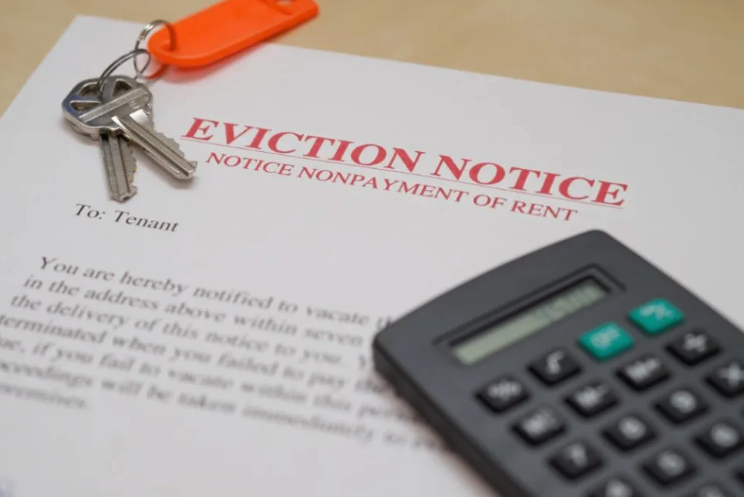
Eviction Notice

Ample funding of policies that help our most vulnerable seniors stay in their homes should be a top priority for the Minnesota Legislature’s $9.3 billion projected budget surplus.
What those vulnerable seniors do not need is elimination of income taxes on Social Security benefits. This is a hollow promise for most low-income seniors, as explained in courageous commentary by Steven Dornfeld (“Retirees like me don’t need, or deserve, a tax break,” Feb. 4), D.J. Tice (“Minnesotans need a break, but not on Social Security,” Feb. 28) and the Star Tribune Editorial Board (“Exercise care in spending surplus,” March 20).
Besides the huge hit to the state’s general fund in future years, the Social Security exclusion lacks basic fairness. Nobody disputes that well-off seniors would benefit the most and lower-income retirees and seniors of color the least. In fact, seniors in the lowest income brackets won’t get any help at all from this giveaway to more affluent retirees.
As the fastest growing segment of the homeless population, according to a recent Wilder Foundation report, low-income seniors do need a lot of help, and now. Fixed incomes just don’t keep up with the explosive rent increases of recent years. Waiting lists for subsidized housing are long, and seniors can spend years looking to replace housing.
So what exactly can legislators do with the state revenue surplus and abundant federal stimulus to help seniors stay in their apartments or homes and age in place? As a first priority, we believe legislators must support rental assistance to help seniors and other renters.
With moratoria on evictions and federal rental assistance blinking off, state-supported rental assistance has become more urgent.
Aging in place can be a savings for taxpayers, given high and rising institutional costs for nursing home care, emergency medical procedures, meals and the like. And aging in place provides broader community benefits, enriching connections with neighbors and family, helping local economies as seniors continue to buy locally and provide social capital.
Second, not just renters but older homeowners likewise need support to age in place.
In Minnesota more than 64% of seniors at or below $34,000 in income own their own homes, according to the Minnesota Housing Agency.
Black, Latin and Asian low-income homeownership rates range from 20% to 60%.
Rising property taxes are a big barrier in keeping one’s home, as are routine maintenance, a ride to shopping, getting the walk shoveled and accessibility modifications. Removing these barriers can make the difference in helping seniors stay in their homes.
So, along with emergency rental assistance, the 2022 Legislature must step up to create and strengthen long-term and proven programs and policies to help senior homeowners.
Here are some other priorities:
- The Minnesota Deferred Property Tax Program helps low-incomes seniors stay in their homes; eligibility should be expanded.
- The Minnesota Essential Community Services Program provides low-income seniors with cash to help them stay in their housing.
Chore services, meal delivery and other services get paid. Suggestion: Add other types of housing maintenance services to the program.
- Low-income rental classification, or LIRC, offers landlords tax breaks when renting to lowincome tenants. Suggestion: Make it a regular part of local campaigns to reward good landlords.
Other programs assisting seniors to navigate services and housing also need to be strengthened.
The Living at Home Network of community nonprofits provides reliable information and services to seniors on how to manage barriers to aging in place. This underfunded statewide network of 32 community-based programs needs more funding. Senior Linkage Line also offers comprehensive information and support to older adults to stay in their homes and communities.
Over the long run, these solutions for lowincome seniors would be a far more efficient and fair use of resources than the estimated $400 million per year in tax expenditure involved in exempting Social Security income. And they would be far more focused and less problematic than various rent-control ordinances that St. Paul and Minneapolis are trying to impose.
We urge you to nudge your legislators to pass these measures, but most important, to provide more state-funded rental assistance. Remind them that all their older constituents earning less than 50% of area median incomes (AMI) and paying more than 30% of their income toward rent would be eligible, and that these folks are more likely to vote than other age groups. In most Minnesota counties, 1 in 7 renters now pays over half of income toward housing every month.
Don Hammen, Mary Morris, Rita Doucet, Chris Nelson, Tim Mungavin and Tom Beer are members of the housing committee of the Minneapolis Regional Retiree Council, AFL-CIO.


My name is Ahmed Raja. I live in San Pablo ca with my 8 years old daughter and wife. I am 65 years old and have received avection notice. I need assistance with rent.